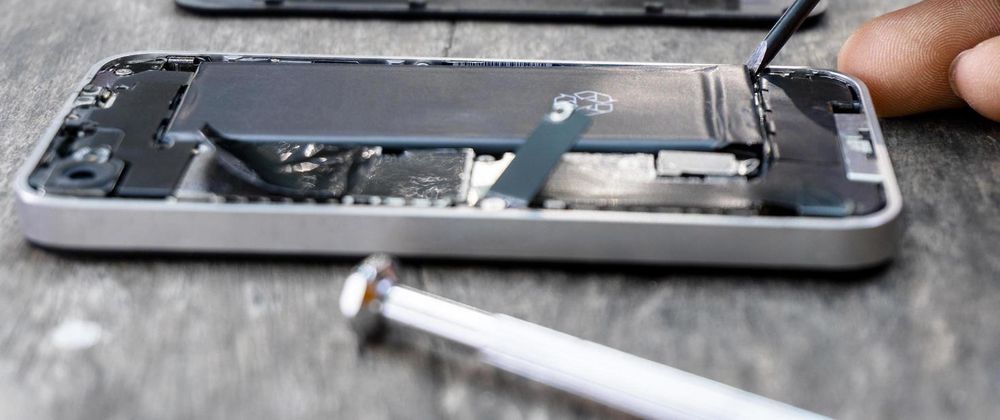Have you ever been on an important phone call and noticed your screen suddenly goes black? It’s one of the most frustrating things, especially if you need to access your keypad, mute the call, or look up information while speaking. While this issue can seem like a technical glitch, it’s often linked to your phone’s built-in sensors and settings. Understanding the reasons behind this behavior and how to resolve it can make a big difference in how smoothly your phone functions during calls. This article provides an in-depth guide to solving the black screen issue during calls, from sensor checks to software solutions and practical maintenance tips that can prevent this from happening again.
Why Your Phone Screen Turns Black During Calls
When your phone screen goes black during a call, it’s usually due to the proximity sensor. This tiny component is located near the top of your device and is designed to detect when your face is close to the screen. Its job is to disable touch functionality and dim the display to prevent accidental input, like your cheek pressing buttons during a conversation. However, when the proximity sensor malfunctions or gets blocked, your phone may think your face is still near the screen—causing it to stay black even when it shouldn’t.
There are also software settings and bugs that can affect the proximity sensor’s behavior. For example, updates to your operating system or custom ROM installations may interfere with how the sensor functions. In some cases, third-party apps or outdated firmware could be to blame.
How the Proximity Sensor Works and What Affects It
The proximity sensor is a small yet vital part of modern smartphones. It works using infrared light or ultrasonic technology to detect nearby objects—specifically your face—during a phone call. When functioning properly, the sensor ensures the display remains off while the phone is near your ear and reactivates as soon as you move it away.
Dirt, dust, or screen protectors can interfere with this mechanism. If something blocks the sensor, the phone may assume your face is still present and keep the screen off. Additionally, if your phone case covers the sensor or fits poorly, it may also lead to false proximity readings. Understanding what could be physically interfering with the sensor is a critical first step toward resolving the issue.
Cleaning and Calibrating the Sensor for Better Performance
If your screen continues to go black during calls even when it shouldn’t, cleaning the sensor area might help. Start by removing any protective case and gently wiping the top front portion of your phone using a microfiber cloth. Avoid using harsh chemicals or excessive moisture.
Some smartphones allow you to recalibrate the proximity sensor through the settings menu or a diagnostic app. This recalibration teaches your phone to recognize the correct distance at which the screen should turn off. In some models, you can access sensor calibration under the developer settings or through a dedicated service menu. Be sure to follow manufacturer guidelines if you go this route, as miscalibration could worsen the issue.
Adjusting Display Settings for In-Call Visibility
Modern phones come with settings that allow users to manage screen behavior during calls. Start by checking your phone’s display or call settings. There might be an option to disable the screen timeout or adjust how the proximity sensor functions during calls.
In Android devices, you can go to the "Call Settings" or "Accessibility" section to locate features like "Keep screen on during call" or “Proximity sensor on/off.” On iPhones, although the sensor is not typically user-configurable, a reset of all settings may restore the proper function.
Also, reducing the auto-lock time or screen timeout period may offer some relief. Though not a permanent fix, it ensures the screen remains on for a longer period during inactivity, which can help during extended phone calls.
Removing Third-Party App Conflicts
Some third-party apps, especially those related to calls, battery saving, or screen dimming, may interfere with the proximity sensor’s natural behavior. If your phone began experiencing black screen issues after installing a particular app, try uninstalling it to see if the issue resolves.
Apps that overlay the screen or manage screen brightness could trigger sensor issues by confusing the phone’s software into turning off the display. Switching to safe mode temporarily disables all third-party apps, allowing you to test whether your phone behaves correctly in its default state. If the screen stays on during calls in safe mode, you’ve likely identified the root cause.
When the Sensor Is Damaged or Failing
In some cases, the proximity sensor may be damaged due to physical impact, moisture exposure, or hardware aging. If cleaning and software adjustments don’t fix the issue, the sensor itself may need to be replaced. This is typically not a DIY repair unless you’re familiar with phone internals, as it involves opening the device and potentially replacing a very small component.
If your phone is under warranty, a sensor repair might be covered. Alternatively, local repair centers can diagnose and replace the proximity sensor without affecting the rest of your device. This is especially important for users who rely on call functions daily and need a reliable fix.
Cell Phone Repair Tallahassee, FL offers expert diagnostics and repair for proximity sensor problems and other screen-related issues, ensuring your device functions properly during every call.
Software Updates and Firmware Fixes
Occasionally, the root of the black screen problem lies in outdated software. Manufacturers frequently release updates that fix known sensor issues or bugs. If you haven’t updated your device recently, check for available updates in your system settings. Installing the latest firmware could correct the sensor behavior automatically.
On rare occasions, a bug in the update itself may cause issues. If the black screen problem began immediately after an update, visit the phone manufacturer’s support forums or contact customer service. You may be advised to perform a factory reset, rollback the update, or wait for a patch. Keeping your device updated and backed up ensures you stay protected against these kinds of software hiccups.
Screen Protectors and Their Impact on Sensors
Some screen protectors, particularly thick or low-quality ones, can cover the proximity sensor area or reflect signals in a way that confuses the phone. If your screen protector is misaligned or dirty, your phone may register your face even when it’s not nearby, resulting in a constantly black screen.
To test whether your screen protector is causing the issue, remove it temporarily and make a call. If the screen remains responsive, you’ve identified the culprit. When purchasing a new protector, look for one that advertises compatibility with your specific model and clearly shows a cutout or transparency for the sensor area.
Performing a Factory Reset as a Last Resort
When all else fails—cleaning, recalibrating, updating, and checking apps—performing a factory reset may be your final option. This step wipes your phone clean, restoring it to default settings and eliminating any software conflict that may be causing the screen to turn off during calls.
Before performing a reset, back up your data to cloud storage or a computer. After the reset, test the phone with only the essential apps installed. If the issue is resolved, you can gradually reinstall your apps and monitor for recurring problems. A reset is often the cleanest way to solve invisible bugs and corrupted software that interfere with sensor performance.
When to Seek Professional Repair Services
If your efforts to resolve the black screen issue are unsuccessful, professional help may be necessary. Whether it’s a hardware malfunction or a complicated software conflict, certified technicians have the tools to pinpoint and resolve the issue more effectively than trial-and-error methods at home.
Professional repair shops can also provide a diagnostic check to confirm whether the proximity sensor is functional or needs replacement. This saves time and reduces the risk of accidental damage that could occur during DIY fixes. If you rely on your phone for work or daily communication, timely repair ensures uninterrupted performance.
Preventive Maintenance to Avoid Future Problems
To minimize the chances of your screen going black during calls again, develop a few maintenance habits. Keep your screen and sensor area clean, especially if you use your phone frequently in dusty or humid environments. Replace old or damaged screen protectors and cases that could obstruct sensors. Regularly update your operating system to benefit from the latest bug fixes and sensor optimizations.
Additionally, avoid installing unfamiliar third-party apps that could interfere with phone functions. Always read reviews and verify permissions before installing new software. Finally, reboot your phone every few days to keep the system running smoothly and clear out temporary glitches.
Discover Elite Repairs in Tallahassee, your premier destination for expert cell phone repair services. Our slogan, "Revive • Renew • Enhance," captures our commitment to restoring any device, including the latest models from Samsung, Google, and other leading brands. Whether it's a Galaxy Note, Google Pixel, or another smartphone, our skilled technicians are adept at diagnosing and solving any issue, ensuring your device works perfectly.



Top comments (0)